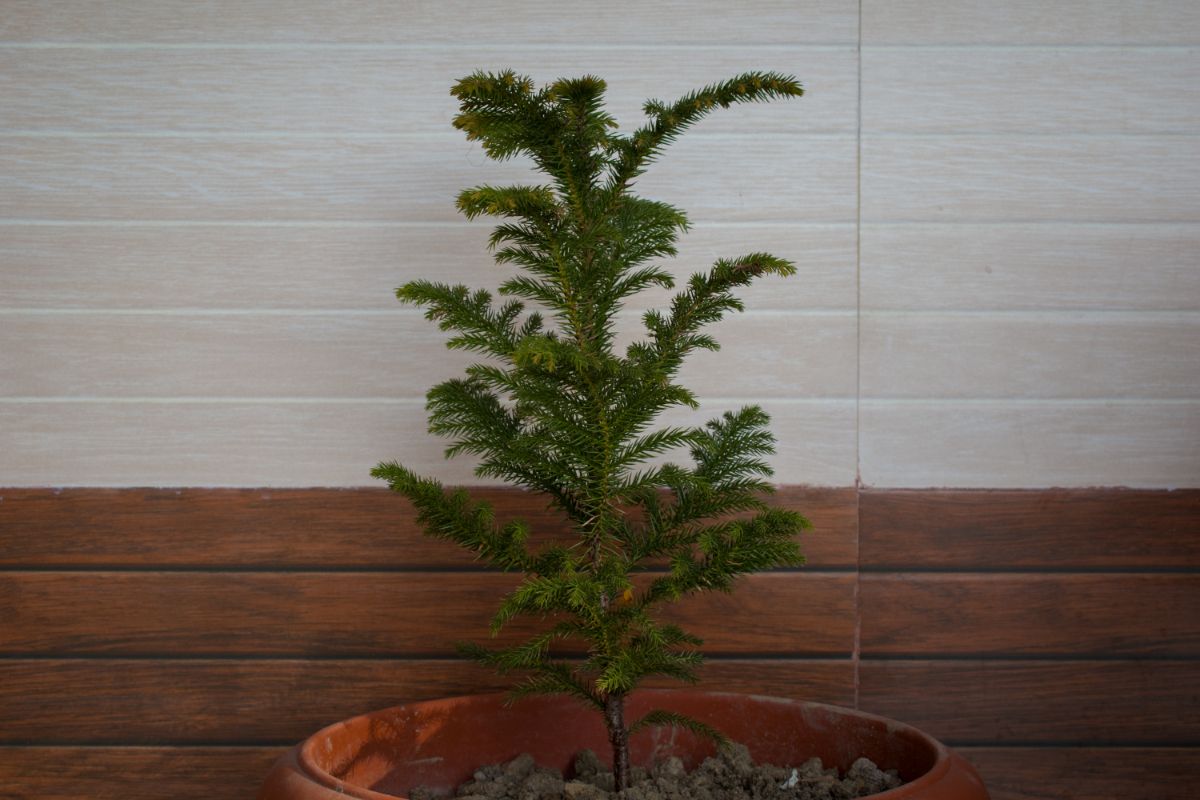Sold individually / Min. 8 inch height / $8.50 per plant / Individual pot size 4” x 6”
The elegant, pyramid-shaped Austrian pine tree (Pinus nigra) is a popular choice for yards and gardens With its dark green needles and tolerance of urban conditions, this hardy evergreen can thrive for years in a container Follow this comprehensive guide to successfully grow a beautiful Austrian pine tree in a pot.
Selecting the Right Pot
Choosing an appropriate pot is the first step to growing Austrian pine trees in containers. Pick a pot that is at least 24 inches wide and deep so the tree has enough room for its roots as it matures Heavy, durable containers like ceramic, concrete, or wooden pots provide stability against wind. Ensure the pot has drainage holes to prevent waterlogging.
For a young tree, start with a 14-16 inch wide pot and repot into progressively larger containers as needed. The pot should not be more than two-thirds the height of the tree.
The Right Soil
Austrian pine trees prefer acidic, well-draining soil. An ideal potting mix contains:
- 1 part peat moss – Improves moisture retention
- 1 part perlite or vermiculite – Allows drainage
- 1 part compost or pine bark – Supplies nutrients
You can also purchase premixed potting soils formulated for evergreens. Adding perlite or vermiculite will help the soil’s porosity. The pH should be between 5.5-6.5.
Planting the Tree
Spring is the best time to plant or repot Austrian pine trees. Carefully remove the tree from its nursery pot, loosen any circling roots, and place it in the new container. Plant the tree at the same height it was in its nursery container, tamping the soil firmly around the root ball to eliminate air pockets. Slowly water until the potting mix is fully saturated.
Sun and Temperature Needs
Austrian pine thrives in full sun – at least 6 hours of direct sunlight daily. In summer, provide some afternoon shade if temperatures exceed 85°F. These trees can tolerate cold winters, handling temperatures down to -20°F when mature. Shelter young trees from harsh winds and extreme temperature swings.
Watering and Fertilizing
Austrian pine is susceptible to drought stress. Check the soil moisture regularly, watering thoroughly whenever the top 1-2 inches become dry. In very hot weather, they may need watering every 2-3 days. Never allow the soil to completely dry out.
Fertilize young trees in early spring with a balanced, slow-release fertilizer. Mature pines typically don’t need much added fertilizer when planted in rich, acidic soil.
Controlling Pests and Diseases
Common pests like aphids, mites, caterpillars, and beetles can affect Austrian pines. Look for signs like speckling, webbing, or sticky secretions on needles. Diseases like fungal needle cast, Diplodia tip blight, and pine wilt can also occur. Maintaining tree health through proper care is the best prevention.
Pruning for Shape and Health
Do light pruning in early spring to maintain shape and remove dead or damaged branches. Avoid heavy pruning that removes more than 1/3 of the tree’s overall mass. Disinfect pruning tools before each cut to prevent disease transmission.
Repotting as Needed
Repot Austrian pine into a larger container every 2-3 years in early spring until it reaches maturity. Carefully remove from the old pot and loosen the root ball. Place into new pot only 1-2 inches wider than the previous one, keeping the soil level the same as before. Water thoroughly after repotting.
Overwintering Care
In fall, prepare Austrian pine trees for winter by moving containers to a sheltered spot that blocks wind and frost. Wrap or insulate the container to protect roots from extreme cold. Avoid over-pruning in fall to limit exposure. Resume normal care when winter dangers have passed.
Common Issues
Here are some common issues and solutions for container-grown Austrian pines:
- Yellowing needles – Usually signals a nutrient deficiency. Fertilize with a balanced plant food.
- Sparse foliage – Can indicate insufficient sunlight. Move tree to a sunnier location.
- Wilting – Check soil moisture and water if dry. May indicate root issues.
- Pest infestations – Take prompt action if you spot pests like mites, aphids, or beetles.
With the right care, your Austrian pine can thrive for years in a container, adding elegant structure and greenery to patios, decks, and gardens. Be diligent about sunlight, water, and nutrition needs for your miniature tree to reach its full potential.

Please, don’t delay ordering – first come first serve!
Mature Height 70′ – 80′ Sun Preference Full Sun Soil Preference Acidic, Alkaline, Clay, Drought, Loamy, Sandy, Well Drained, Wet
By placing an order, you understand that there is no guarantee on survivability on any plants sold. There are no refunds or exchanges – if it is determined that you got a damaged plant you will be provided with a replacement, species dependent on stock availability. Orders will be fulfilled with stock that is conservation grade for the conservation natured purpose of this low-cost seedling program.
Once orders are picked up please make any claims of damaged or unhealthy plants within 24 hours after pickup, photos are encouraged.
Austrian pine is an evergreen, coniferous species of tree that grows to mature heights of 80 to 150 feet (25 – 45 m) with a straight trunk up to 40 to 72 inches (1 – 1.8 m) in diameter, measured at breast height; and a broad crown with stout level branches with up-swept tips; dense ovoid-conic when young and becoming rounded to flat-topped with age.
Planting Pine Trees [3 Amazing Tips]
FAQ
How do you take care of a pine tree in a pot?
Can pine trees survive in pots?
Are Austrian pines easy to grow?
How do you keep Austrian pine small?
